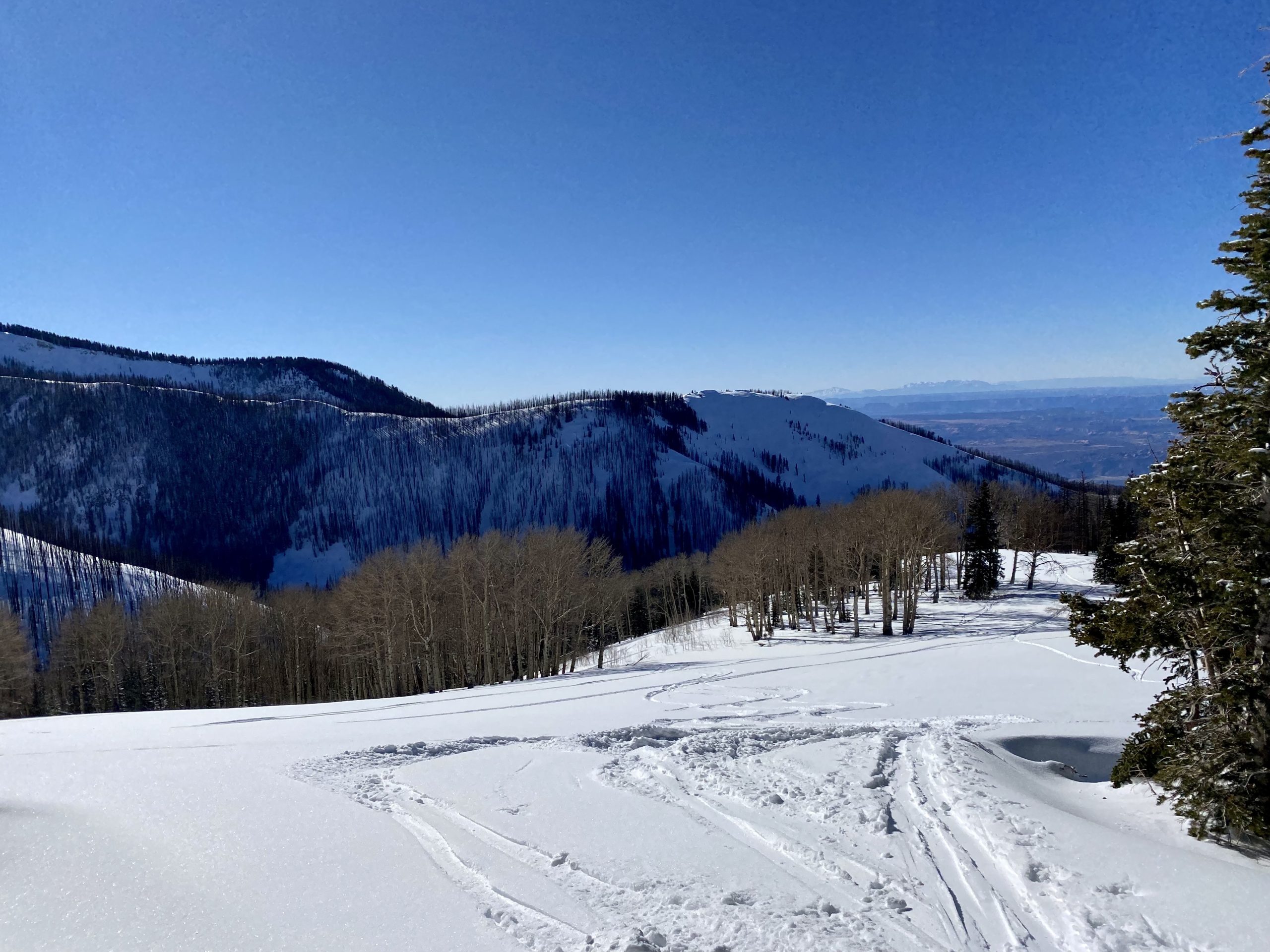Some information may be outdated.
Moab is set up for another season with a weak snowpack, according to Utah Avalanche Center Forecaster Eric Trenbeath.
The brief snowstorm in October contributed to that, Trenbeath said. When snow comes early but then dries out and refreezes, it turns into faceted snow: snow crystals reform into larger, more angular crystals, creating weak bonds with neighboring crystals. This type of snow is also referred to as “sugary” snow—the snow that falls apart in your hands when you try to shape it into a snowball.
That sugary snow, left over from October, is forming the base of Moab’s snowpack. Plus, Trenbeath said, the “La Niña” weather pattern is continuing this year, meaning the winter will be warmer and drier. A shallow snowpack is a weak snowpack, Trenbeath said.
As a forecaster, Trenbeath monitors the layers in the snowpack that create its structure. Every weather event—snow, wind, rain, freezing temperatures, warm temperatures—can create a new layer.
He goes out in the field—in his case, out to the La Sal Mountains—three or four days per week to look for anything that could create dangerous avalanche conditions, such as weak layers in the snowpack, windblown slopes, significant snowfall, or other recently triggered avalanches.
The UAC publishes regular avalanche forecasts on its website (www.utahavalanchecenter.org/forecast/moab), which describe if avalanche conditions are low, moderate, considerable, high, or extreme, and break down the conditions with a description of current weather and snow. Since the season is just beginning, forecasts are published every few days, but when winter really picks up, they’ll be published daily.
“The snow surface consists of a mixed bag of sun crusts, wind crusts, old stubborn wind slabs, and cold loose snow,” says the most recent forecast for Moab, published on Nov. 19. “What does this mean? For now, conditions are mostly stable, but we are developing future weak layers.”
The other part of Trenbeath’s job is education: Teaching winter backcountry recreationists how to be safe.
The week of Dec. 4 marks the beginning of the statewide Avalanche Awareness Week, bringing with it the UAC’s annual Know Before You Go workshop. The Moab workshop, led by Trenbeath, will be on Tuesday, Dec. 6 at the MARC.
“The thing about avalanches is that getting caught in one is a choice,” Trenbeath said. “People think it’s an accident or a mystery or not an exact science, but you can control whether or not you’re in avalanche terrain: Avalanche terrain is defined as any slope steeper than 30 degrees.”
The Know Before You Go program has been around for years, but this year got revamped. The old program, which featured a 10-minute video and subsequent discussion led by UAC staff, ran for seven years, so it needed updates, Trenbeath said. This year’s program will feature shorter videos showing winter recreation and avalanche terrain, interspersed with more interactive discussions.
The workshop isn’t a full training for avalanche terrain, but will teach people about the basics of avalanche safety. It’ll go over the equipment used in avalanche terrain (beacons, probes, and shovels); how to read an avalanche forecast; and the red flags of avalanche danger. It’s meant to be a refresher for anyone who has taken an avalanche class or to inspire people to pursue one, Trenbeath said.
UAC will round out Avalanche Awareness Week in Moab with a fundraiser on Saturday, Dec. 10 with drinks, music, and ski waxing: It’ll be a chance for the local winter community to get to know each other, Trenbeath said, and raise funds for both UAC and the Lower Utah Nordic Alliance (LUNA).
“Everybody wants to get out into the beautiful mountains in the wintertime, and there are safe ways to do it and not safe ways to do it,” Trenbeath said. “To help people understand that—it’s a super rewarding job.”
More event information is available at www.utahavalanchecenter.org.
Appreciate the coverage? Help keep local news alive.
Chip in to support the Moab Sun News.





